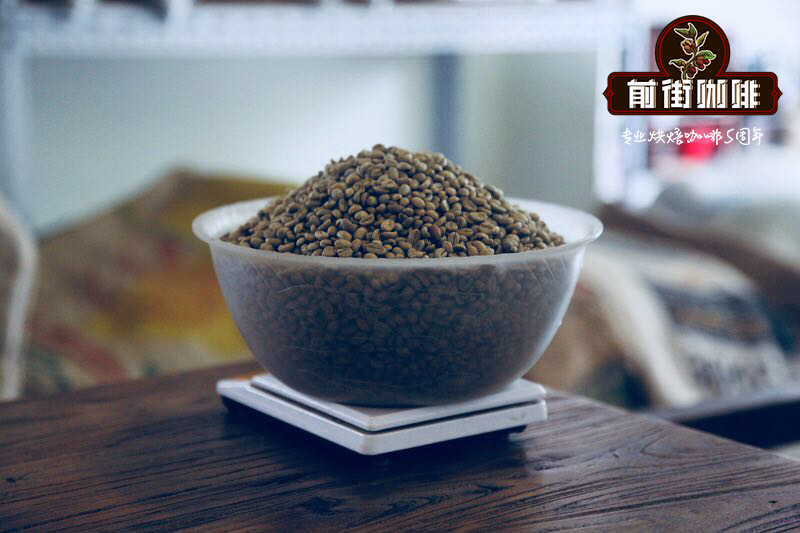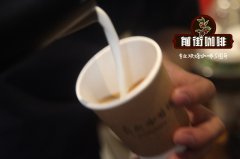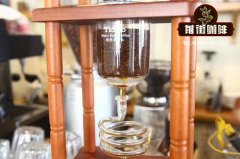Suggestion on price parameters of hand-made Nicaraguan coffee _ how to bake Nicaraguan coffee beans

Professional coffee knowledge exchange more coffee bean information please follow the coffee workshop (Wechat official account cafe_style)
Introduction of Nicaraguan Coffee Bean processing Plant
The Cafetos de Segovia microbatch processing plant belongs to Ana and Martha Albir, the second-generation sisters of the Albir family, who inherited their passion for coffee from their father. The Albir family bought a coffee farm in 1991, until political disputes forced them to leave the country and stop the daily operation of the farm. In 2007, Ana and Martha decided to take over the farm and inherit their father. In 2015, they also invested in a processing plant and began coffee processing in Cafetos de Segovia in 2016, providing processing and export services not only to their own family farms, but also to 11 nearby farms.
02 | Origin description
The Nueva Segovia region and its surrounding hills are located on the northwest border between Honduras and Nicaragua. Of all the producing areas in Nicaragua, Nueva Segovia is one of the smallest, but the flavor of coffee from Segovia is good. Nicaragua has been growing coffee commercially for more than a century. however, due to political and economic instability, it has not attracted much attention from the coffee industry. In recent years, coffee plantations that had been taken over during the Nicaraguan revolution have been returned to local families, and Nepal is striving to become a distinctive coffee producer.
Analysis of raw coffee beans in Nicaragua
Kaddura, a natural variety of bourbon, was discovered in Brazil in 1937. Its tree is not as tall and shorter as bourbon. Due to inheriting the blood of bourbon, the resistance is relatively weak, but the yield is higher than that of bourbon. Although found in Brazil, Kaddura is not suitable for growing in Brazil, so it is not planted on a large scale in Brazil, but is popular in Central and South America, such as Colombia, Costa Rica and Nicaragua.
Kaduai is an artificial hybrid of Kaddura and Mondu Novo. Kaduai has a good ability to resist natural disasters, especially wind and rain. Kaduai tree species are relatively low, compared with other coffee trees, the fruit of Kaduai is stronger and harder to pick, and the fruit is both red and yellow.
04 | introduction to the handling method
Honey treatment is a kind of treatment between sun treatment and water washing. It keeps the coffee clean by washing, and because it is dried in the sun together with the pulp mucosa, it greatly increases the sweetness and caramel flavor of the coffee (the sugar content of the pulp mucosa is extremely high). Honey treatment first appeared in Costa Rica in Central America, mainly because of the lack of water resources in some high-altitude areas of Central America, so the coffee fruit was dried in the sun together with the pulp mucosa after using the pulp sieving machine.
Black honey treated coffee beans dried in the dark for the longest time, the shorter the light time, the drying time for at least 2 weeks. The black honey treatment of raw coffee beans is the most complex (because of the longer drying time, it takes longer to check to prevent the coffee beans from mildew and fermentation), the labor cost is the highest, so it is the most expensive.
Roasting Analysis of Nicaraguan Coffee beans
This coffee belongs to the SHG grade, the bean density is medium, roasted with medium firepower gently climb, turn yellow point in about 5 minutes, then reduce the firepower into the Mena reaction, to 168C again reduce the firepower to lengthen the Mena reaction time, the beans will enter the explosion with a relatively stable temperature difference.
The first explosion begins at 185-186 degrees, at which time there will be a small exothermic process. It is recommended to reduce the firepower to develop flavor at 191 degrees and 195.8 degrees at 2 minutes and 20 seconds.
Roaster Yangjia 600g semi-direct fire
The furnace temperature is preheated to 200 degrees Celsius, the throttle is opened at 3J30s and fired, the firepower is adjusted to 140, the throttle is unchanged, the temperature return point is 1`38``, keep the firepower, 5`10` turn yellow, the smell of grass disappears, enter the dehydration stage, the firepower is lowered to 110, the throttle is opened to 4. At 168 degrees, the firepower was reduced to 80 again.
After dehydration, the bean surface appears wrinkled and black markings, and the taste of toast changes to coffee, which is a prelude to an explosion. When it starts to explode at 8`34`', all the throttle doors are open. After an explosion, the development time is 2 minutes and 20 seconds, and the firepower is reduced to 60 to 195.8 degrees at 191 degrees.
This honey-treated beans use African-style sun scaffolding instead of cement ground to accurately grasp the processing quality of raw beans. With spicy and herbal aromas, you can feel dried fruit, black rice tea, slightly malic acid and sweetness, with almonds and berries on the finish.
[Nicaraguan black honey treatment]
Country: Nicaragua
Region: new Segovia (Nueva Segovia)
Processing plant: Cafetos de Segovia
Altitude: 1200-1400 m
Variety: Kaddura / Kaduai
Grade: SHG
Treatment: black honey treatment
06 | Cooking data
Recommended cooking method: hand flushing
Degree of grinding: 3.5 (Fuji R440, Japan)
Water temperature: 91 °C
V60 filter cup, 15g powder, water temperature 90-91 degrees, grinding 3.5.The ratio of water to powder is close to 1:15
Steaming in 30 grams of water for 30 seconds
Segment: water injection to 120ml cut off, slow water injection to 225ml
That is, 30-120-75, the total extraction time is 2 minutes.
Other suggestions for trickling extraction:
Normal pressure, recommended grinding degree of 3.5-4 / water temperature 90 °C
Philharmonic pressure, recommended 2.5 grinding degree, water temperature 90 °C
Hand punch: 3.5 degree of grinding, water temperature 91 °C
3.5 Grinding-90 degrees water temperature
Nicaraguan coffee bean brand recommendation
The Nicaraguan coffee beans roasted on Qianjie Coffee-Fairview Manor washing [Maracadura] is fully guaranteed in terms of brand and quality. And more importantly, the performance-to-price ratio is extremely high, each pack of 227 grams, the price is only 90 yuan. Calculated on the basis of 15 grams of coffee beans per cup, a bag can make 15 cups of coffee, which costs only about 6 yuan per cup, which is recommended by conscience compared to the price of hundreds of cups sold in cafes.
Qianjie coffee: Guangzhou bakery, the store is small but a variety of beans, you can find a variety of unknown beans, but also provide online store services. Https://shop104210103.taobao.com
Important Notice :
前街咖啡 FrontStreet Coffee has moved to new addredd:
FrontStreet Coffee Address: 315,Donghua East Road,GuangZhou
Tel:020 38364473
- Prev

Nicaragua Providence Manor Coffee Introduction_Nicaragua Coffee Bean Drinking Method_Nicaragua Coffee Recommendation
Professional coffee knowledge exchange More coffee bean information Please pay attention to Coffee Workshop (Weixin Official Accounts cafe_style) Nicaragua Coffee Bean Tianyi Manor Introduction: Tianyi Manor is located in Dipilto, growing coffee on 10 plots above 1,350 meters above sea level. Misael Sauceda Olivera, the current owner of the estate, was born from his father Porfirio Sauceda (P
- Next

Brief History of Nicaraguan Coffee _ Nicaraguan Coffee Bean grading system _ how much is Nicaraguan Coffee Bean
Professional coffee knowledge exchange more coffee bean information please follow the coffee workshop (Wechat official account cafe_style) A brief history of Nicaraguan coffee bean cultivation and development: from 1840 to 1940, was the coffee boom in Nicaragua (Coffee Boom), coffee began to become a major export crop in Nicaragua, strongly promoted by the government, foreign companies can easily invest or acquire land
Related
- Detailed explanation of Jadeite planting Land in Panamanian Jadeite Manor introduction to the grading system of Jadeite competitive bidding, Red bid, Green bid and Rose Summer
- Story of Coffee planting in Brenka region of Costa Rica Stonehenge Manor anaerobic heavy honey treatment of flavor mouth
- What's on the barrel of Blue Mountain Coffee beans?
- Can American coffee also pull flowers? How to use hot American style to pull out a good-looking pattern?
- Can you make a cold extract with coffee beans? What is the right proportion for cold-extracted coffee formula?
- Indonesian PWN Gold Mandrine Coffee Origin Features Flavor How to Chong? Mandolin coffee is American.
- A brief introduction to the flavor characteristics of Brazilian yellow bourbon coffee beans
- What is the effect of different water quality on the flavor of cold-extracted coffee? What kind of water is best for brewing coffee?
- Why do you think of Rose Summer whenever you mention Panamanian coffee?
- Introduction to the characteristics of authentic blue mountain coffee bean producing areas? What is the CIB Coffee Authority in Jamaica?

